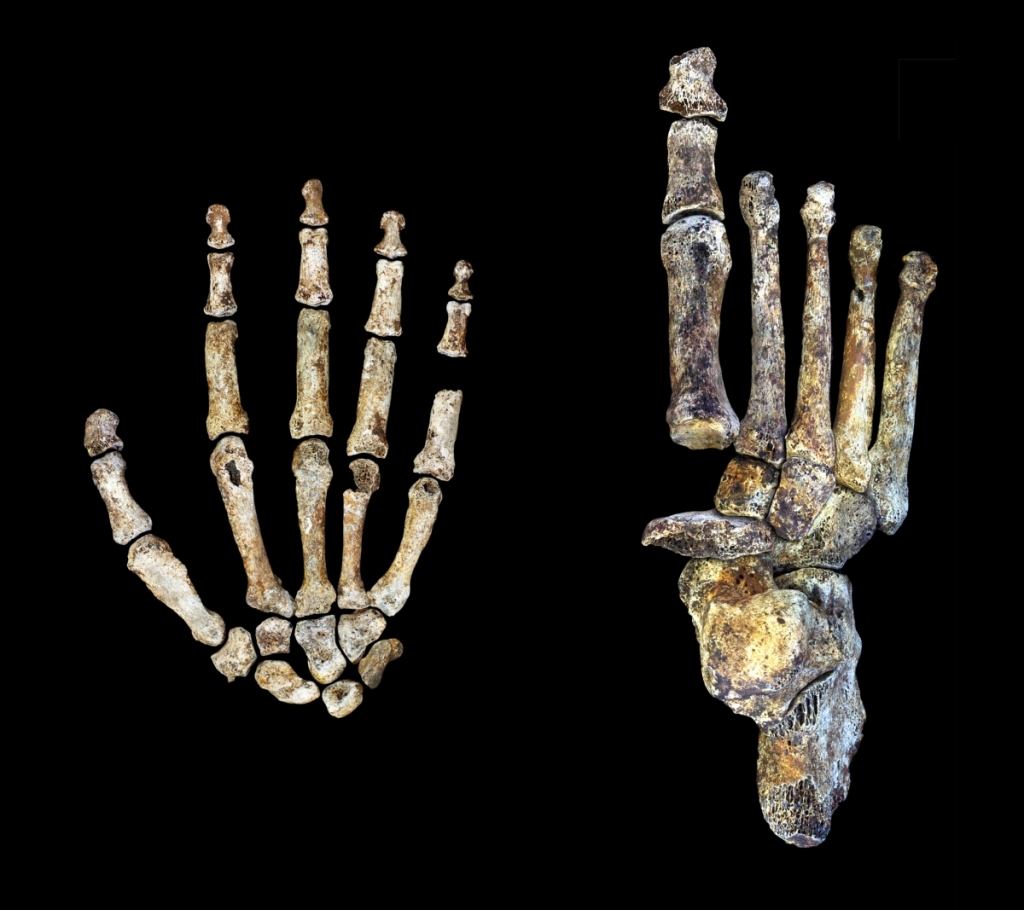-
Tips for becoming a good boxer - November 6, 2020
-
7 expert tips for making your hens night a memorable one - November 6, 2020
-
5 reasons to host your Christmas party on a cruise boat - November 6, 2020
-
What to do when you’re charged with a crime - November 6, 2020
-
Should you get one or multiple dogs? Here’s all you need to know - November 3, 2020
-
A Guide: How to Build Your Very Own Magic Mirror - February 14, 2019
-
Our Top Inspirational Baseball Stars - November 24, 2018
-
Five Tech Tools That Will Help You Turn Your Blog into a Business - November 24, 2018
-
How to Indulge on Vacation without Expanding Your Waist - November 9, 2018
-
5 Strategies for Businesses to Appeal to Today’s Increasingly Mobile-Crazed Customers - November 9, 2018
Foot of Homo naledi, resembles our own
The revelation came by studying naledi’s feet and hands, the combination of which show the species was adept on the land and in the trees.
Advertisement
However, its fingers were longer and more curved than most australopithecines – indeed, more curved than those of almost any other species of early hominin.
Homo naledi was named after the cave it was discovered in, and despite its similarities to humans – like its facial features and elongated limbs – it still had its own unique features. When taken together, the hands and feet of Homo naledi show a separation of hand and foot function while also providing new insight into the skeletal form that evolved in early members of our species. In a new report, the scientists revealed that Homo naledi was both good at climbing trees and walked upright.
H. Naledi was first discovered by archaeologists working in a South African cave called Rising Star in 2013.
Lead author William Harcourt-Smith and colleagues describe the H. naledi foot based on 107 foot elements from the Denaldi Chamber, including a well preserved adult right foot. The brain of H. naledi was likely one-third of the size of a modern human brain, says Zipfel, suggesting that it was only once human-like creatures began to stand upright that they developed the high levels of intelligence seen in modern humans.
Dartmouth anthropologist Jeremy DeSilva said: “It was a striding long-distance traveller with an arched foot and a non-grasping big toe with subtle differences from humans today in having somewhat more curved toes and a reduced arch. It looks like what the foot of Homo erectus might look like. So: much more bi-pedal than not, but not 100 percent”. The structure of the wrist and thumb bones are similar to modern humans and Neanderthals, and suggest that Homo naledi used stone tools and had a powerful grip. “The legs are long, the knees are like ours, the feet are human-like”.
What’s more, and like Lucy – the famous Australopithecus afarensis specimen – H. naledi’s pelvis was more outward flaring, allowing for more leverage in walking.
In a press release, lead author Tracy Kivell said, “The tool-using features of the H. naledi hand in combination with its small brain size has interesting implications for what cognitive requirements might be needed to make and use tools, and, depending on the age of these fossils, who might have made the stone tools that we find in South Africa”.
These findings are quite intriguing, so it’s natural to wonder if H. naledi represents a few kind of “missing link” in the fossil record.
“We are seeing what’s essentially a human foot”. “But, that is not how evolution works!”
DeSilva says that, instead of evolving from chimpanzees, we know that humans and chimpanzees share a common ancestor that was neither human nor chimpanzee.
According to Zipfel, the confirmation that H. naledi was an upright, walking hominid is significant for understanding how the human brain developed.
A fresh analysis of hand and foot bones of Homo naledi, the latest addition to the human genus, shows that while the creature’s foot resembles that of modern humans, its fingers are curved, in an unmistakable sign of arboreal living.
Advertisement
Read the studies at Nature: “The hand of Homo naledi” & “The foot of Homo naledi.”





























